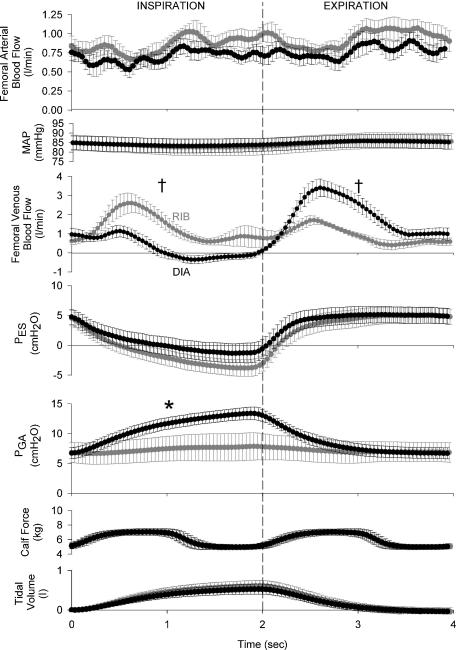Figure 4. Effects of ribcage or diaphragm breathing patterns on femoral arterial inflow, MAP and femoral venous outflow signal-averaged over the course of a breath during mild calf contraction conditions (minimum of 120 breaths per subject per condition).
Note that the respiratory modulation of femoral venous return persists despite the addition of the calf muscle pump, as mean inspiratory femoral venous return is significantly lower during diaphragm breathing conditions when compared to ribcage breathing, with this pattern being reversed during expiration. Grey circles, ribcage breathing; black circles, diaphragm breathing; †P < 0.01 and *P < 0.05 for comparisons of ribcage versus diaphragm for mean inspiratory or expiratory values.

